Additions
While Walt Disney Studios’ 2002 opening had left Disney fans the world over speechless and did absolutely nothing to help the resort’s sinking finances, Disney did begin to inject more life into the miniscule and underbuilt park. It just took a few years.
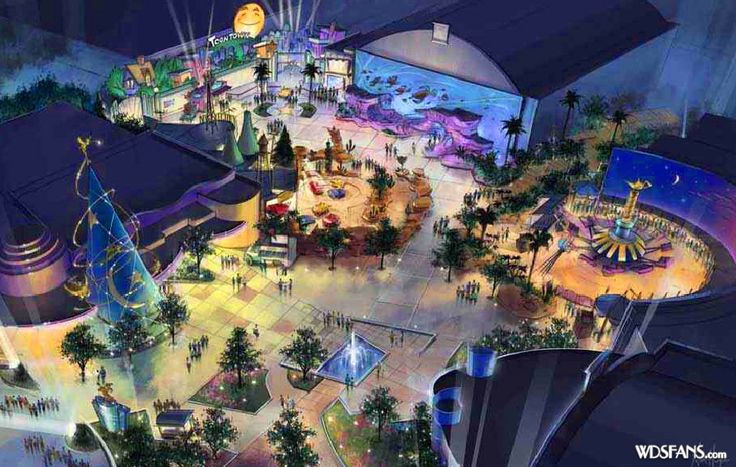
Its first notable expansion came about in 2007 – five years after opening – when the Animation Courtyard area of the park was joined by (and henceforth become) Toon Studio. On paper, we’re meant to believe that this portion of the park is somewhat like an extension of Toontown (which Disneyland Paris doesn’t have) where cartoon stars film their movies. It was also an early adopter of the “Pixarification” of Disney Parks.
In practice, the expansion brought with it two attractions to join the Flying Carpets: a spinning family flat ride called Cars Race Rally and – most impressively – Crush’s Coaster. This indoor spinning family coaster is, at its core, an off-the-shelf carnival ride, but a few show scenes made it an unexpected highlight for the park. The problem is that for years, the low-capacity family coaster was essentially the park’s only family feature and one of only five rides, period, earning multi-hour waits on even the most lightly attended days.
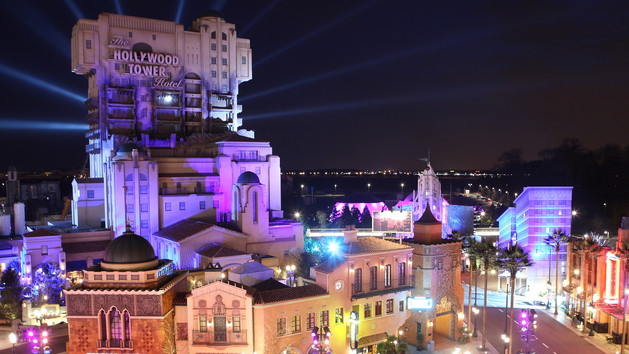
That same year, the park opened its first certifiable new E-Ticket. The Twilight Zone Tower of Terror rose in the park’s “hub” area (technically Production Courtyard).
The version of the ride used in Paris – identical to California Adventure’s with its pueblo-deco architecture and high-efficiency ride system – is a headliner even if it doesn’t live up to the Floridian original. It goes without saying that the ride was a much-needed boost to the park’s lineup, and the incredible in-depth story of how Disney designed and “dropped in” the value-engineered ride is part of our must-read Lost Legends: The Twilight Zone Tower of Terror feature.

Almost as important as the towering ride itself, a much-needed placemaking project created a sort of “mini” Hollywood Blvd. of detail around the towering 1920s hotel. The new avenue of romantic West Coast architecture leads to a new entry for the Studio Tour, too – a flat panel tunnel beneath the Hollywood Hills. A masterwork of design? Hardly. But the thoughtful “plussing” was a welcome addition to the barren backlot park.
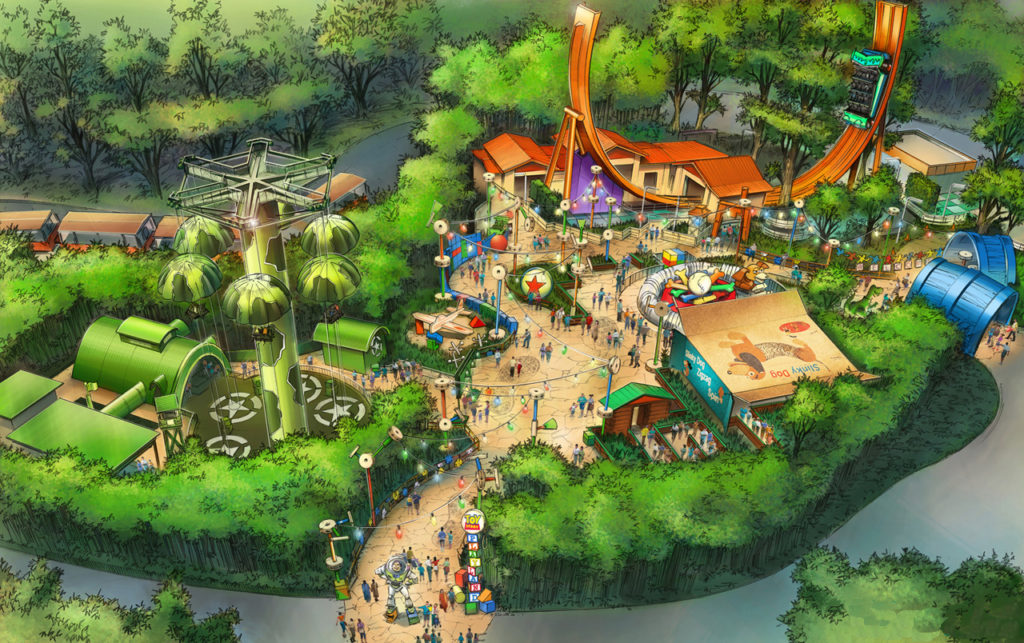
The next big boost came in 2010 with the opening of Toy Story Playland – the first of four eventual versions of the mini-land that would open at Disney Parks worldwide. The expansion upped the park’s ride count by three, though each ride included is a lightly-dressed off-the-shelf carnival ride, and Disney fans typically view such Toy Story themed lands critically as “cheap and cheerful” additions that don’t add much to a park’s experience…
In other words, Toy Story Playland brought the park’s ride count to nine, though five are fairly inoccuous family flat rides… much less grand on average than, say, Epcot’s similarly-sized ride count.

The park’s eventual star opened in 2014. The Modern Marvel: Ratatouille: L’Aventure Totalement Toquée de Rémy may not be as world-class as fans hoped, but it’s a fun family dark ride using Disney’s heralded trackless technology, and the ride fittingly rocketed to the top of the park’s billing. Most easily understood as Disney’s take on Universal’s Amazing Adventures of Spider-Man, the Ratatouille dark ride is a hit, and finally gives the park a can’t-miss experience for international visitors and locals alike.
(And for that matter, Ratatouille also gave the park its 10th ride. If you can believe it, that officially gave 2014 Walt Disney Studios Park an unthinkable twice as many rides as the original Disney’s Hollywood Studios in Florida had the same year!)

But perhaps even more telling than what it is is what the new Ratatouille attraction is not. It is not, for example, placed on a large studio “soundstage.” Instead, a brand new cul-de-sac off of Toon Studio leads to a sub-area themed to a Parisian courtyard.
Every bit as beautiful as Epcot’s France pavilion, this mini plaza really ought to be a “land” in and of itself. While the Ratatouille attraction is the star, you’ll also find shops and a restaurant perfectly situated along the lifelike streetscape. In short, it’s the kind of area you’d like to visit, explore, and spend time in – arguably, the first such area for Walt Disney Studios Park.
That means that Ratatouille not only gave the park something worth talking about, it also made a very clear distinction: going forward, this park will shed its “behind-the-scenes” views for stepping into your favorite Disney and Pixar films. And that was perhaps the most important sign yet, because it meant that at long last, Disney was willing to address its “studio” problem in Paris…
Studio fatigue
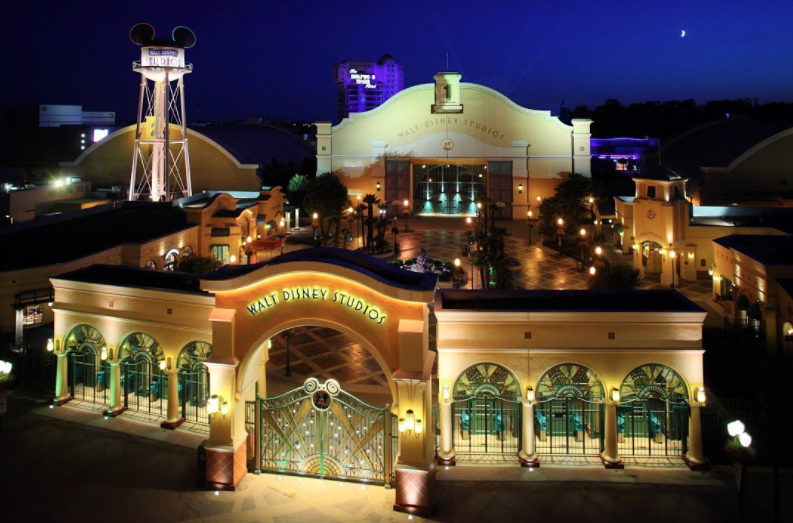
Time and time again, we’ve seen Disney burned by the “studio” aesthetic that the company itself popularized in the ’90s. After all, the opening of the Disney-MGM Studios and Universal Studios Florida opened the proverbial floodgates. Suddenly, owning a “theme park” required neither the immersion of Magic Kingdom nor the ambition of Epcot. Instead, any studio could build or license its intellectual property to amusement parks now populated by beige soundstages and water towers – and they did. Paramount and Warner Bros. both bought regional park chains and pulsed in flimsy “label-slapped” IPs and “studio” aesthetic.
The era of “studio” parks spread around the globe. The trouble is, it didn’t last. To our thinking, there are three key reasons that the age of the “studio park” came to a pretty resounding end around the New Millennium in pop culture.
1. Behind-the-scenes went digital
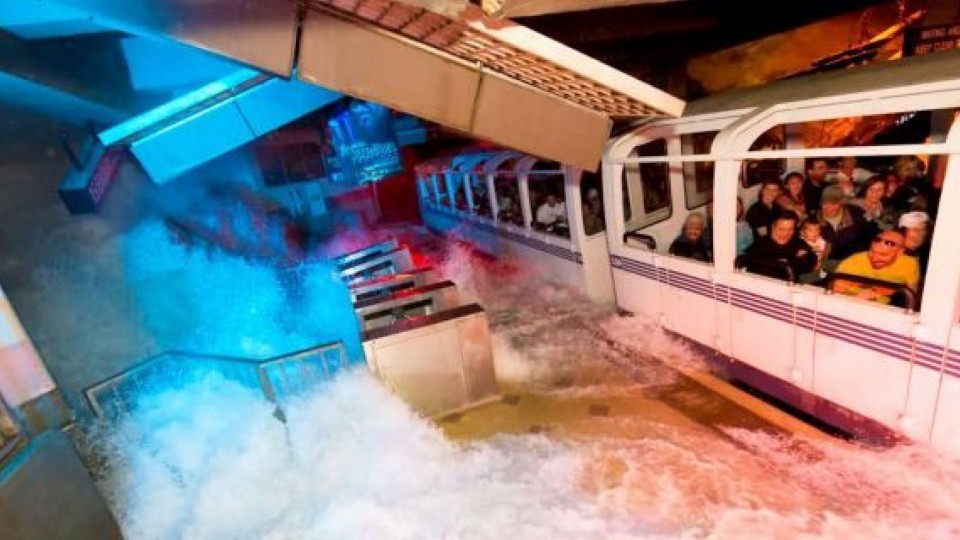
A hallmark of Disney and Universal’s “studio” parks was, of course, the promise of seeing behind-the-scenes of how movies are made. Of course, staged disasters made for the perfect overlap of “movies” and “theme parks,” leading both parks to lean heavily into demonstrations of fires, floods, earthquakes, explosions, and car chases.
Even by the late 1990s, though, the kinds of stunts and special effects showcased at the Disney-MGM Studios and Universal Studios Florida were becoming obsolete, replaced with digital effects and CGI… Each “studio” park’s physical displays of special effects were practically becoming relics – the way movies used to be made.
But the digitizing of special effect production was just the start. By the early 2000s, the analog VHS had become extinct, replaced with digital DVDs. Aside from “HD” video and rewind-free scene-skipping, DVDs offered interactive menus and special features including commentary, making-of videos, and behind-the-scenes featurettes. Those peeks into production further diminished the “magic” of Disney & Universal’s “studio” parks. Maybe that’s why both companies did a complete 180 for their next installations…
2. It’s more fun to be in the scene than behind it.
By the early 2000s, the “context” of the late-’80s / early-’90s “studio” era had been stripped away. Compared to the vibrant, immersive, and spectacular lands of Animal Kingdom and Islands of Adventure, the barren backlots and artificial facades of the Disney-MGM Studios and Universal Studios Florida looked like low-cost cop-outs.
In one easy-to-dissect case, consider the Flying Carpets as they exist in two places:

At Tokyo DisneySea, Jasmine’s Flying Carpets positions guests high above a tiled arabesque courtyard layered in Arabian domes, topiaries, and golden planters. The ride’s central hardware is disguised with marble columns, golden peacocks, and “water” that gushes out of a central urn and cascades to the crystal palace pool below, where bubbling “water bell” fountains add to the enchantment.
This, of course, sits just outside of the labyrinthine marketplace of the park’s astoundingly detailed Arabian Coast bazaar. So even though a regular ole “Dumbo” style carpet ride may not seem “worthy” of the highly-praised DisneySea, both in its execution and context, it’s a perfect way to add life to an A-Ticket family ride.
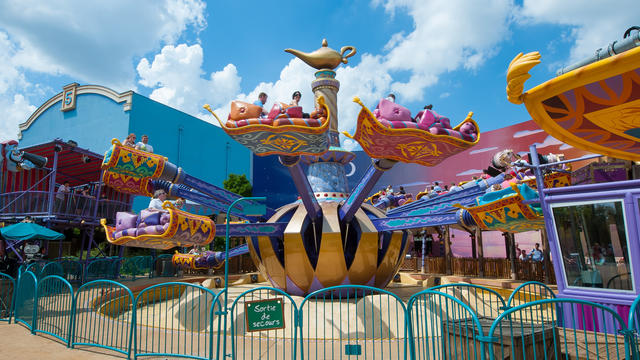
Compare that to the Flying Carpets Over Agrabah at Walt Disney Studios. There, seated on a flying carpet, you revolve over concrete in front of a flat painted backdrop of a desert while a Plexiglass genie hoisted high on a mechanical rig yells out “ACTION!” in the Toon Studio backlot, wedged between a big blue soundstage with a Finding Nemo roller coaster and a Cars family flat ride.
Here’s the point: being put “to work” on vacation just isn’t much fun. Its location and its narrative shape the same ride experience wildly. Playing an “extra” on a film set saps any hope of being immersed into a world or imagining a fantastic role for yourself.
3. A new era of themed design began.
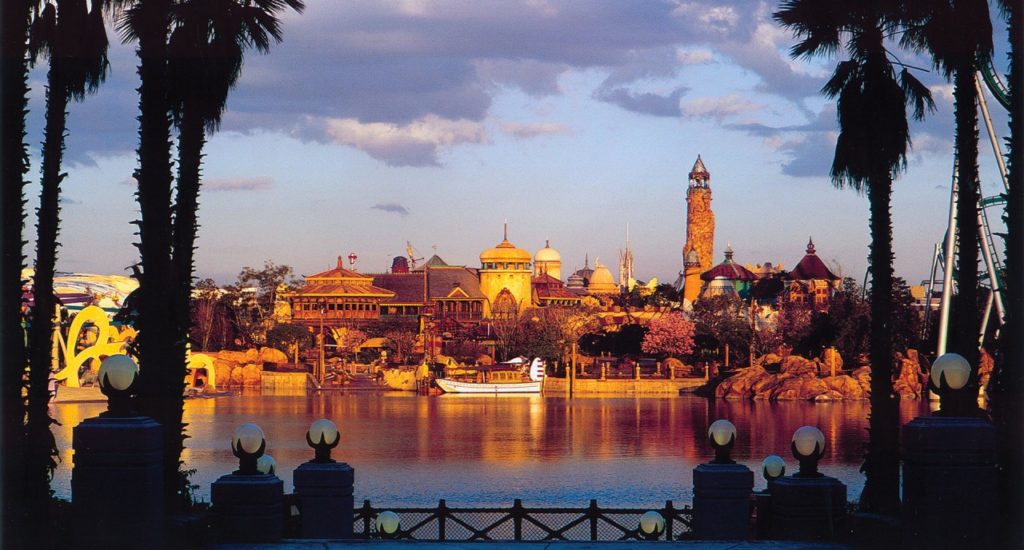
Within a decade of Orlando’s paired “studio” parks’ openings, they were joined by two very, very different follow-ups. Disney’s Animal Kingdom (1998) and Universal’s Islands of Adventure (1999) didn’t just diverge from the “studio” aesthetic; they obliterated it. Both were so vastly different from the parks to come before that it can hardly be read as anything but an indictment of the “studio” era.
It’s easy today to see both Animal Kingdom and Islands of Adventure as an inflection point, becoming the new standards for theme parks in the 21st century by leaving cameras, lighting rigs, soundstages, and even movies behind entirely. Totally immersive (albeit in different ways and with different motivations), Animal Kingdom and Islands of Adventure had kicked off a Renaissance of themed entertainment design – one that left the Disney-MGM Studios and Universal Studios Florida looking like remnants of another time, stuffed with mixed-and-matched IPs.
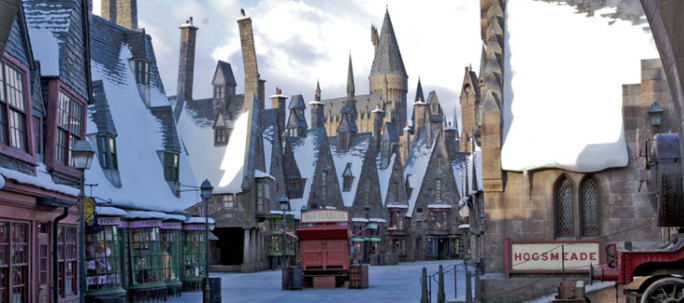
Of course, the path set by Disney and Universal’s pre-New-Millennium parks was diverted again thanks to 2010’s Wizarding World of Harry Potter, which not only cemented each parks’ commitment to immersion, but invented the “Living Land” concept of building a place, to scale, from a story – an entire land dedicated to stepping into a single IP.
Inherent in the Hogsmeade (and reiterated by Cars Land, Galaxy’s Edge, Diagon Alley, The World of Avatar, Avengers Campus, Toy Story Land, and more), a mere E-Ticket in a showbuilding would no longer do. People wanted to step into worlds; to dine and shop like their favorite characters; not to see behind-the-scenes, but to be the star in the worlds they’d only known through the page or the screen.

As Diagon Alley, Springfield, Galaxy’s Edge, and Toy Story Land show, those “living lands” have become the de facto fixes for Studio parks… but they don’t exactly “fit,” leaving “studio” parks stuck in a permanent identity crisis.
And believe it or not, that’s where we’re heading next in our story of Walt Disney Studios… What happens when “living lands” start getting plopped down among soundstages and backlots? When is a “studio” park no longer a “studio” park? And if it’s not a “studio” park anymore, then what is it?


